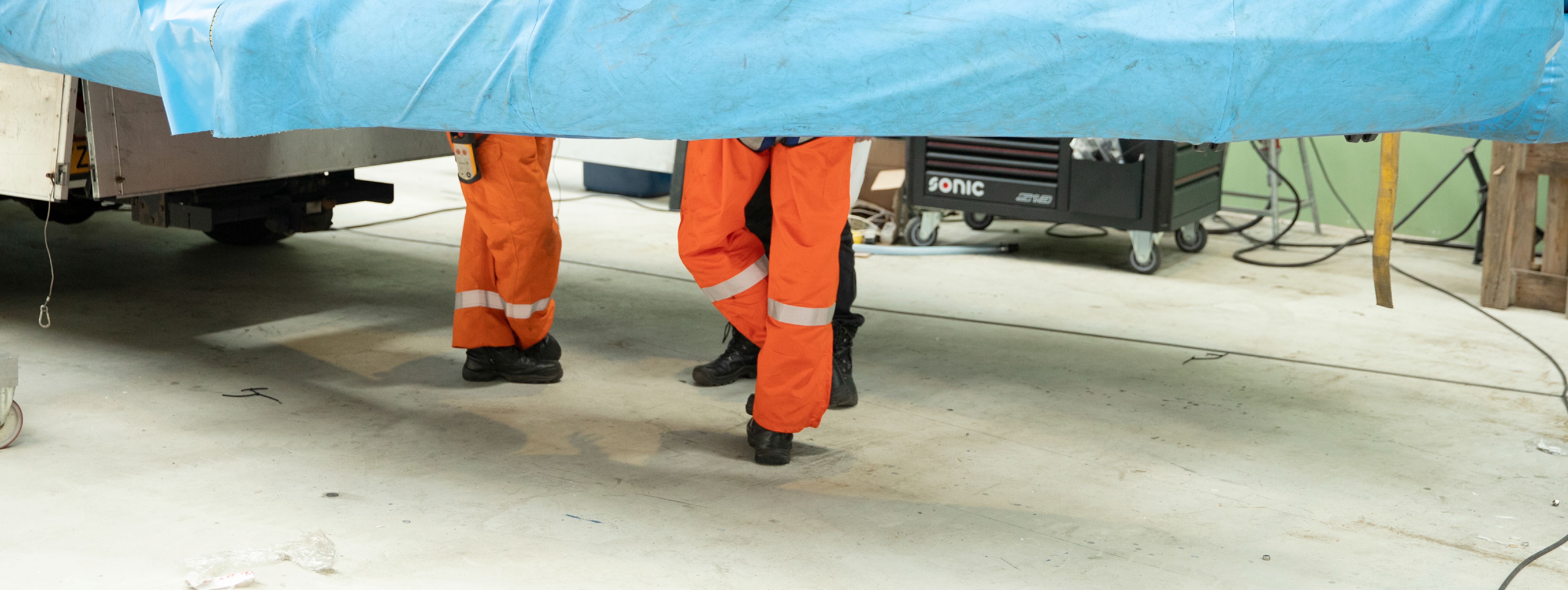The world is your oyster
Imagine that your wind turbine is installed offshore and provides significant amounts of wind energy. But then, one of the wind turbine's blades requires maintenance, or worse, gets damaged. You cannot simply take your ladder and climb up there to make the repairs like you would at home. So, Jeroen Tol and Wouter Kloppenburg from Ampelmann introduce their bright-blue “Puffer” in their production hall in Rotterdam harbour, a kind of oyster or mussel that folds around a rotor blade where you can safely stand in to do your repairs.
High in the sky in a harsh environment
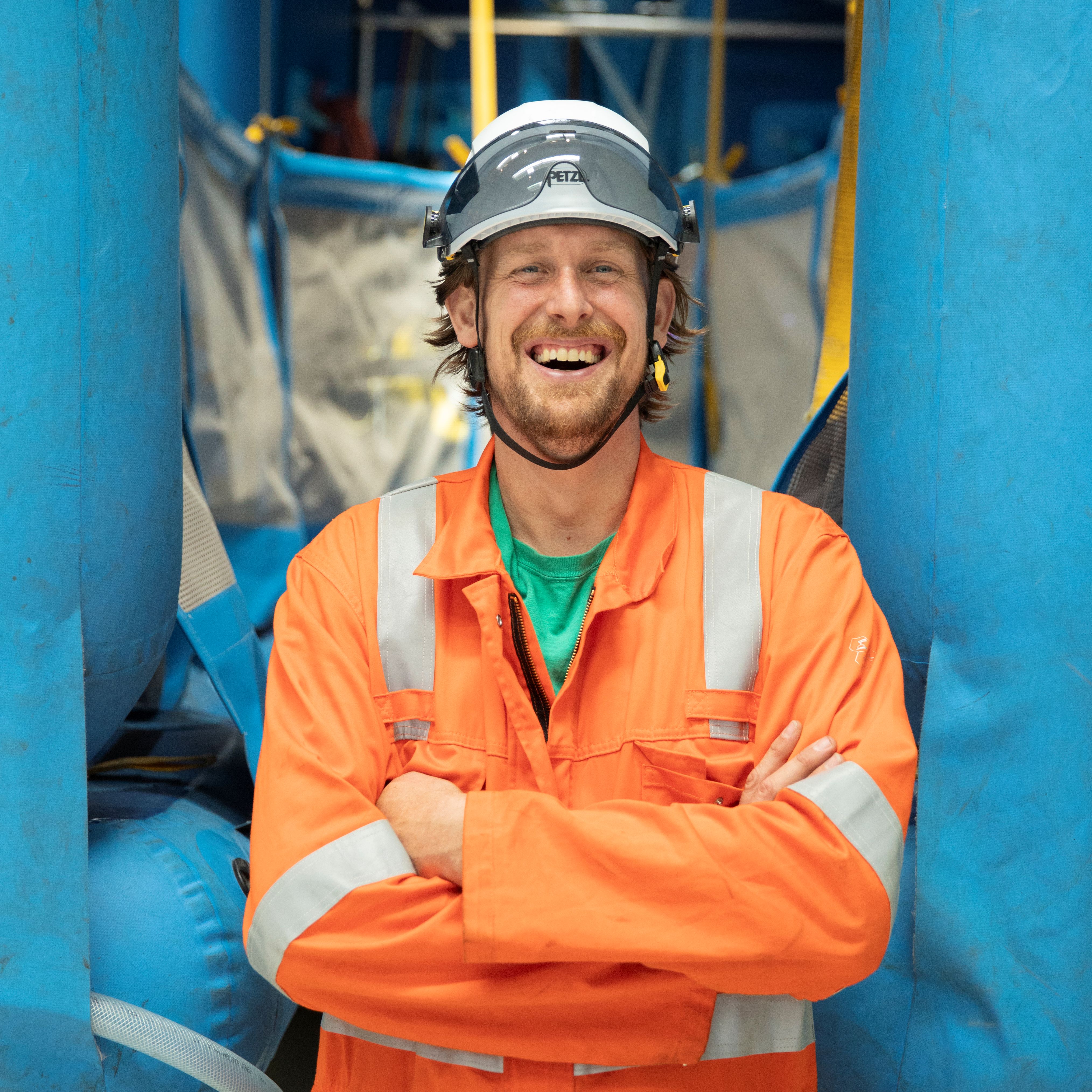
Have a look at Jeroen's profile on LinkedIn
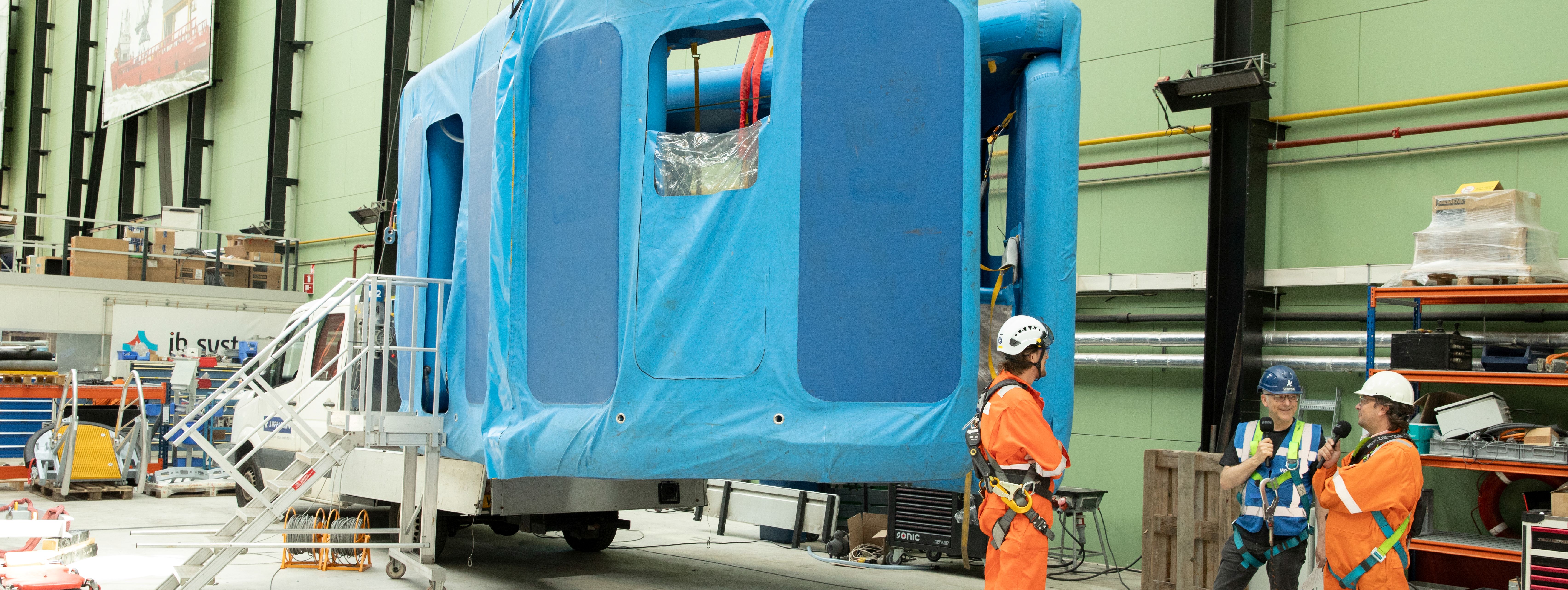 |
|
Introducing the blue mussel
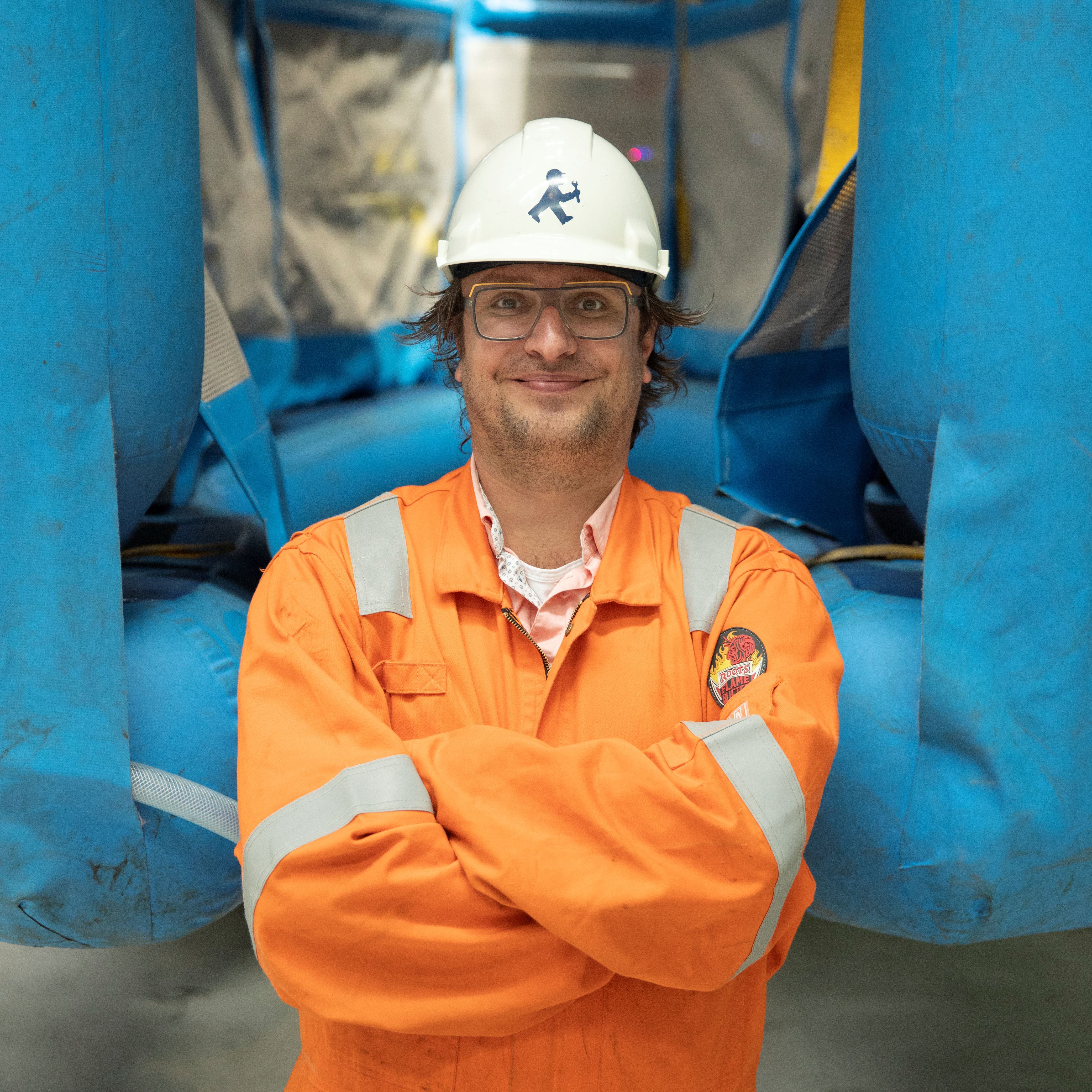
Have a look at Wouter’s profile on LinkedIn
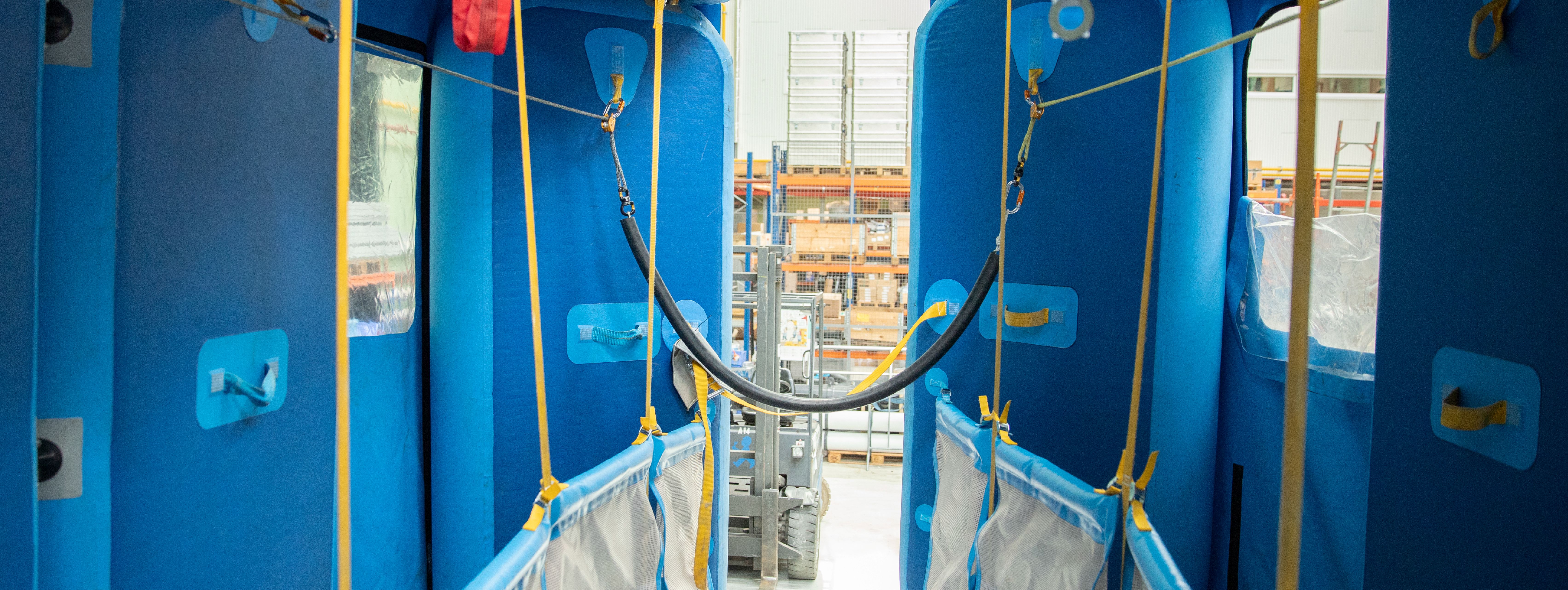 |
|
Elegantly simple - or simply elegant
With continued experiments, Wouter and Jeroen are trying to make the Puffer as efficient as possible. Wouter highlights some of the things they learned during earlier tests, which influenced the design of the Puffer, which is currently version 3.2. “Size is a big thing offshore, so you must ensure that the Puffer is as small and light as possible during transport. The previous version weighed 900 kilos in total. This was too heavy to set up because all the winches were on the top. So we removed them all, and now it’s only 400 kilos. We lift the Puffer to the transition piece and inflate it there.”
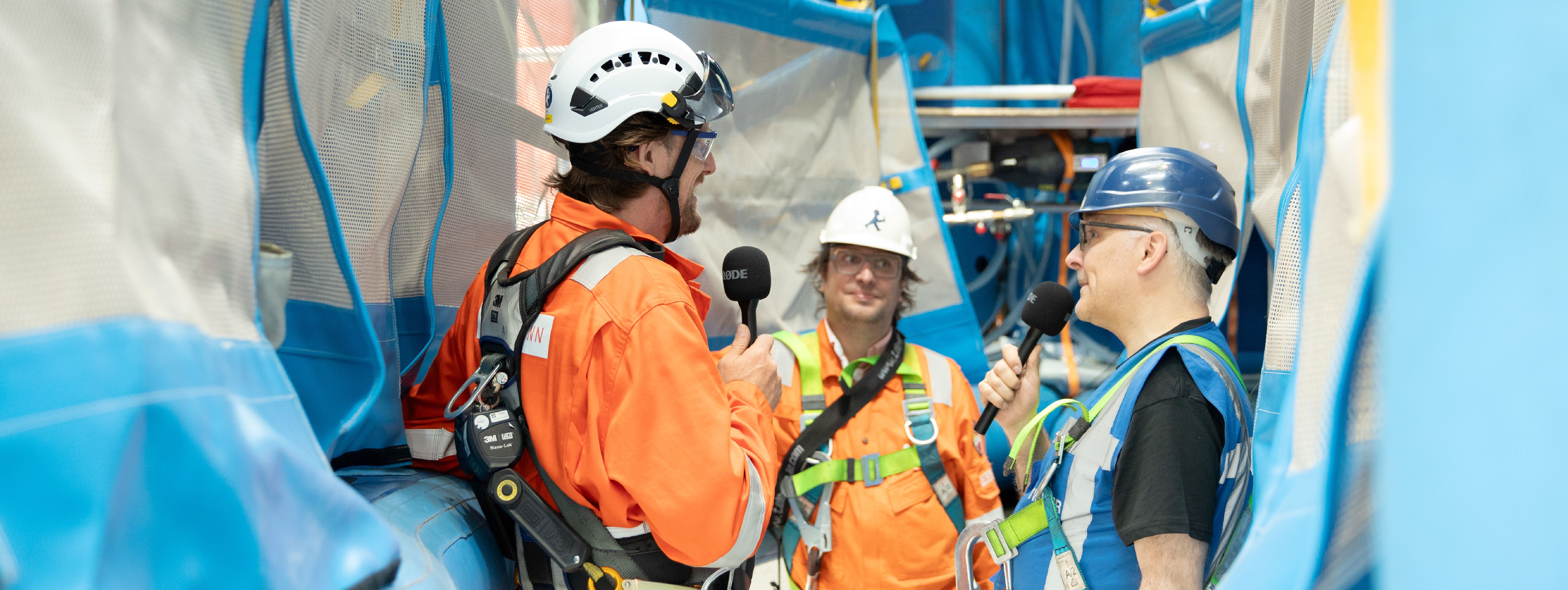 |
|
Is that all? Of course not. “We can easily collect the dust from the sanding with a vacuum cleaner inside the Puffer. And we learned from the workers that they also needed a workbench inside to put their tools on, and everything is attached to lanyards so they don’t fall. Furthermore, you can work in harder winds or when it rains. So, the operational window is increased,” Wouter says enthusiastically.
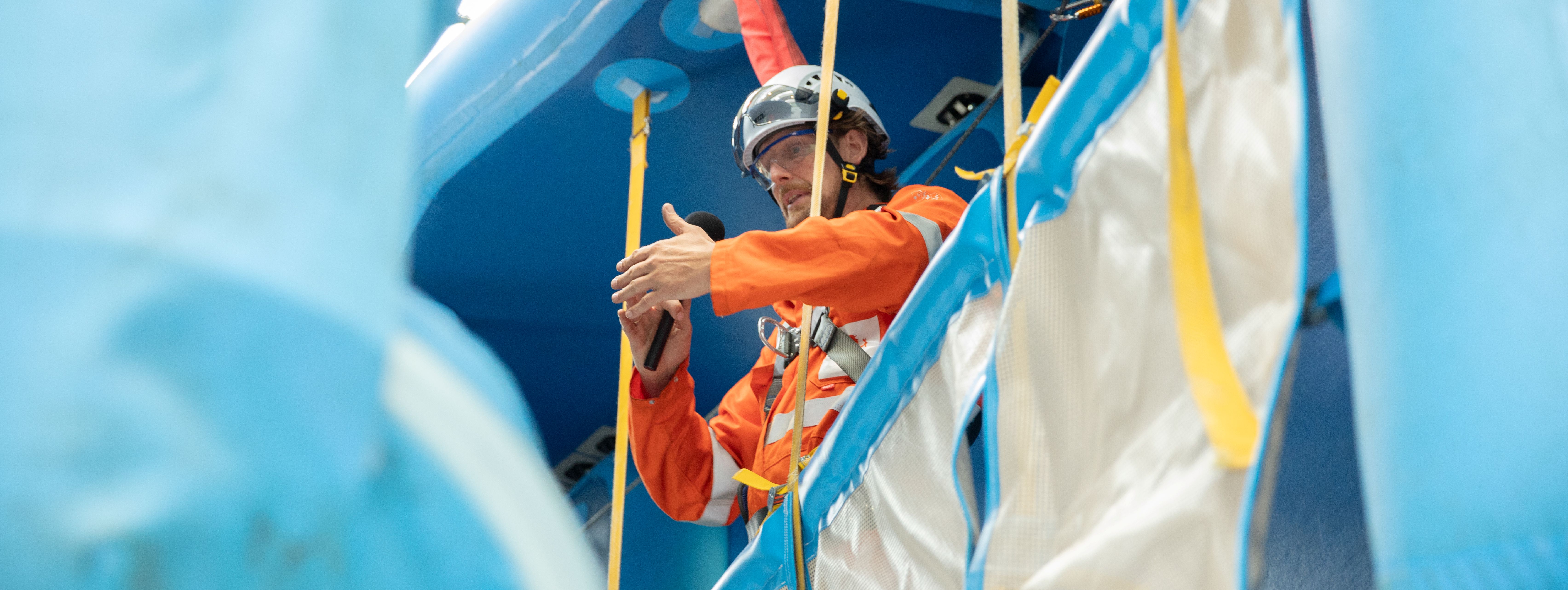 |
|
Like a bouncy castle
Inflating the Puffer takes only a quarter of an hour, which is much faster than other set-ups currently used for these types of activities. Two workers can freely walk around in the Puffer and are safely secured. And they can control it from within or from the outside. The doors can be (partly) opened or closed. And when inflated, the sensation of the Puffer can be compared to an attraction at an amusement park. It feels like walking in a bouncy castle. Clearly, the invention is not only efficient but also fun.
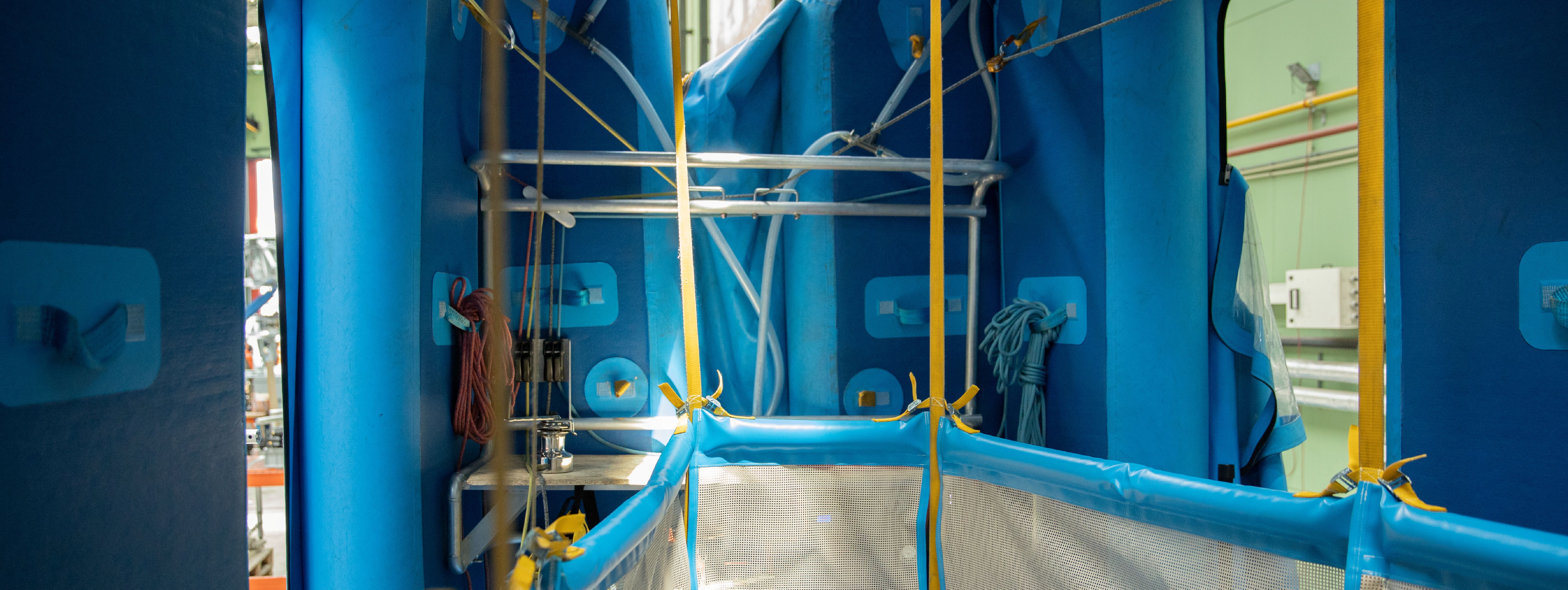 |
|
Almost ready
Although it sounds like everything has been thought of, the Puffer is not yet ready to be ordered. Wouter: “Together with RWE, we’ve planned some more tests onshore, and we want to develop the system so that it is ready for offshore tests. Hopefully, we’ll be able to do those offshore tests next year.” Then, the Puffer will be one step closer to changing the future of offshore wind.
Ampelmann: expertise in motion-compensated gangway systems
RWE: expertise in project development and operating wind farms
TNO: expertise in market introductions
Find out more about the Puffer project
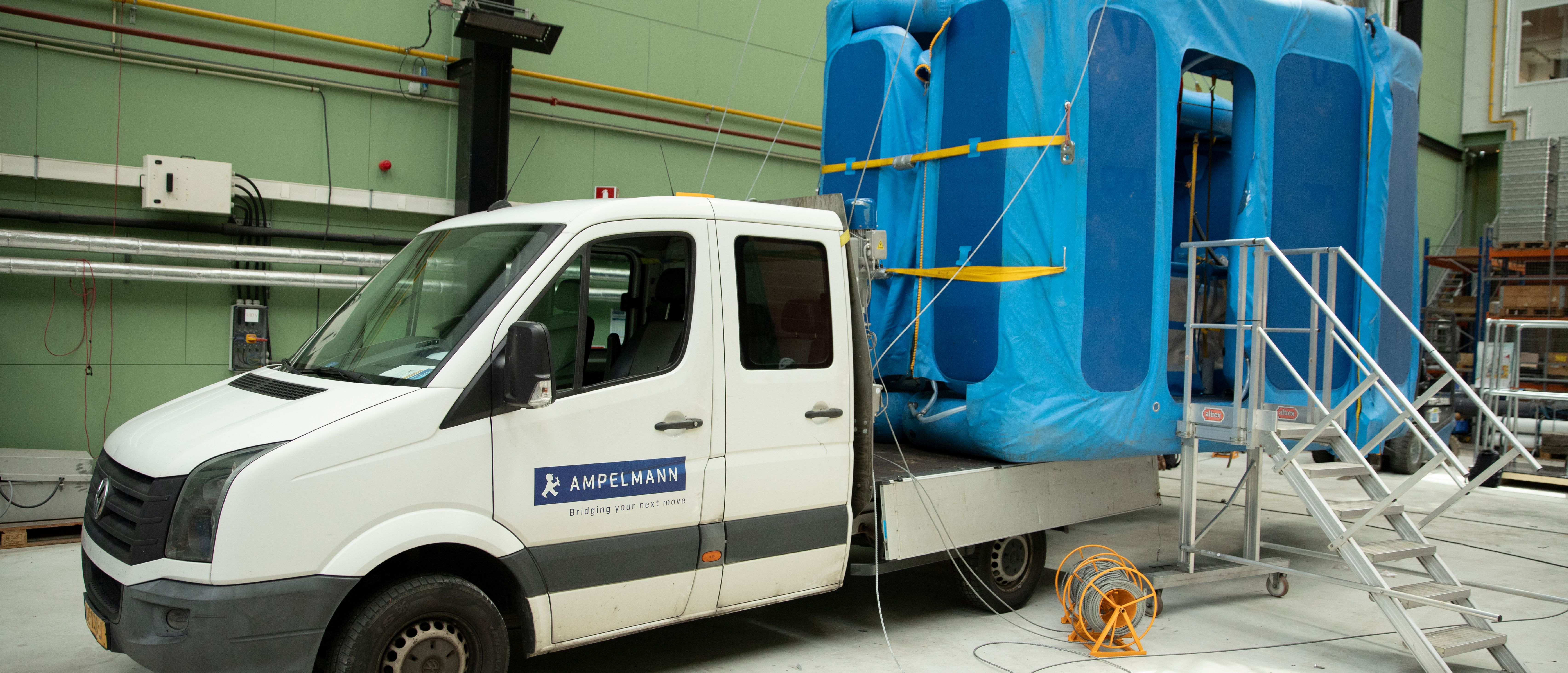 |
|
The most recent test of the Puffer was conducted in Wönkhausen, Germany, on an RWE wind turbine. The primary objectives were to measure the set-up time and evaluate the winch system. The test proved successful, highlighting valuable insights and areas for improvement, which will be addressed in version 3.3. This updated version is scheduled for testing in February 2025, marking the next step in refining the Puffer for offshore wind turbine repair operations.
© GROW ’25
